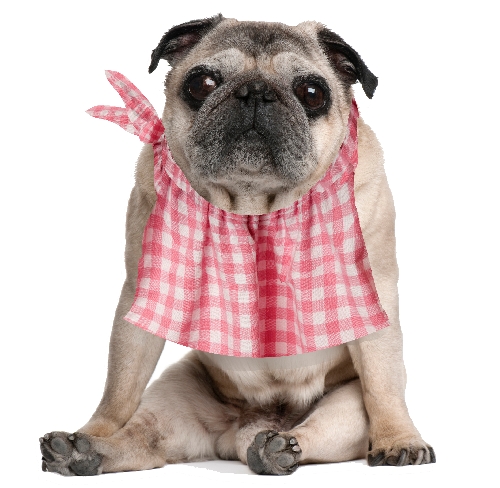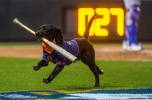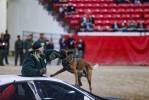Common foods can be pooch poison
Dogs can eat poop. So they can eat anything, right?
Wrong. In fact, some of the most dangerous substances to feed Fido come from your very own dinner table.
Plenty of human foods are safe for dogs, such as rice, carrots and skinless broiled chicken. But plenty aren't. And unless you're a vet, it's hard to know.
Dr. David Henderson of Sunrise Veterinary Clinic sees one or two canine food poisoning cases per month. It's not just our digestive systems that differ, according to Henderson, but our metabolic tolerances.
"Their ability to detoxify human food is different," Henderson says.
Although Henderson warns against all table scraps as a rule, he agrees that the following foods should never occupy your dog's mouth.
Xylitol
Henderson calls this latest miracle sweetener -- popular in gum, mouthwash, candy and cookies -- a "recipe for disaster."
Xylitol is found in a swelling number of diabetic products because it's considered natural and safe. Unless you're a dog.Then it gives you potentially fatal hypoglycemia.
"The (dog's) body processes it as sugar so there's an insulin surge, but there's no sugar there for the cells to uptake," Henderson says. "It's like an insulin overdose."
Initial symptoms include vomiting, lethargy and loss of coordination.
As if that wasn't enough, Xylitol also can cause -- via a mechanism Henderson says experts don't yet fully understand -- deadly liver necrosis.
"If you think your dog has eaten even one stick of gum with Xylitol, call your vet or emergency hospital immediately," says Henderson, who believes that all Xylitol-laced foods should contain warning labels for dog owners.
Grapes and raisins
Kidney failure has killed dogs after only seven grapes, according to Henderson. An as-yet-unknown toxin, to which humans are immune, is believed to inhabit the fleshy part of the purple and green globes. (Raisins are even more dangerous, since they concentrate the toxin.)
Initial symptoms include vomiting, diarrhea and lethargy.
"Not every dog is susceptible," Henderson says. "Some can eat grapes and raisins and never have a problem.
"But do you really want to take the chance?"
Onions and onion powder
Smelly breath is far from the worst consequence for man's best friend.
"One onion ring isn't gonna kill him," Henderson says, "but a bunch could."
Onions contain disulfides, which cause a dog's body to destroy red blood cells.
"The hemoglobin gets all wacky," Henderson says.
Onion powder, like raisins, is even more dangerous because all the harmless water is removed.
"Read your labels," Henderson says. "Some people think it's safe to feed baby food to their dogs, but baby food can have a lot of onion powder in it as a flavoring."
Initial symptoms include upset stomach, labored breathing, lethargy and dark urine. (Garlic contains the same toxin, but for some unknown reason isn't nearly as dangerous.)
Bones and corncobs
Sorry, kids. "This Old Man" was wrong. To give a dog a bone is not smart.
The obvious choking hazard isn't even the biggest danger.
"Dogs don't digest bones," Henderson says. "Bones don't just become nothing by the time they make it down to the colon."
Bones splinter and can obstruct and perforate the intestines, requiring perilous surgery. Initial symptoms of intestinal blockage include vomiting, diarrhea, abdominal pain, fever and shock.
But what about wolves and wild dogs? They eat the bones of animals they kill or scavenge.
"Yeah," Henderson replies, "and they live to about 5 years old and then they die."
Pitted fruits
Not only can pits and large seeds cause choking and intestinal obstructions, but certain seeds -- peaches, plums, apricots, cherries and persimmons -- contain cyanide derivatives that build up over time.
Symptoms of cyanide poisoning, according to Henderson, include labored breathing, dilated pupils and shock.
Tree nuts
Many tree nuts -- especially macadamias -- contain one or more unknown doggy neurotoxins that can result in weakness, stiffness, pain and shaking.
And walnuts can harbor a fungus deadly to dogs.
"Stay away from all nuts," Henderson says.
Chocolate and anything with caffeine
Chocolate is the No. 1 food most dog owners know to avoid. Henderson says an overdose causes dogs to "get all jittery and hyper and go into twitching and possibly seizures -- like a person who has overdosed on meth."
However, Henderson ranks it low on this list because it's not necessarily a death sentence. Two things matter: the strength of the chocolate and the weight of the dog.
A 50-pound dog can tolerate 18 ounces of milk chocolate before trouble sets in, 8 ounces of dark or semisweet, 2.6 ounces of baking or unsweetened chocolate, and 1.4 ounces of dry cocoa powder.
If your dog weighs less than 15 pounds, rush him to a vet if he eats any amount of any chocolate other than milk. But if it's just one candy bar, he should be OK -- aside from a couple of more potty trips than usual.
A chemical called theobromine is the culprit in chocolate. It overstimulates a dog's central nervous system. Caffeine has a similar effect on dogs, so the same advice holds for foods containing it.
Fatty foods
When your dog begs for bacon and the fat trimmed off your steak, he's also begging for potential pancreatitis. Symptoms include vomiting, severe abdominal pain and shock.
"The pancreas actually starts to digest itself and the rest of the body," Henderson explains.
This affect can be cumulative or result from a single fatty meal. And it can be fatal.
"At the very least, your dog will be in incredible pain," Henderson says.
Contact reporter Corey Levitan at clevitan@ reviewjournal.com or 702-383-0456.




























